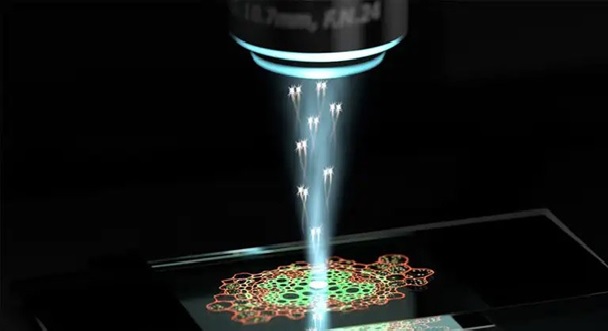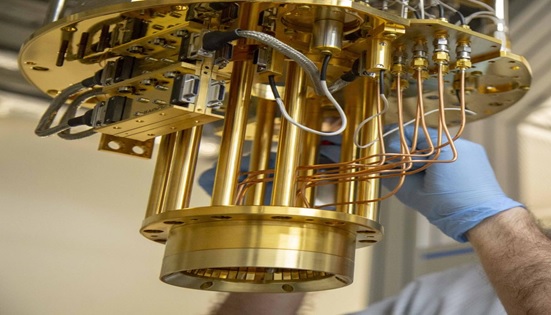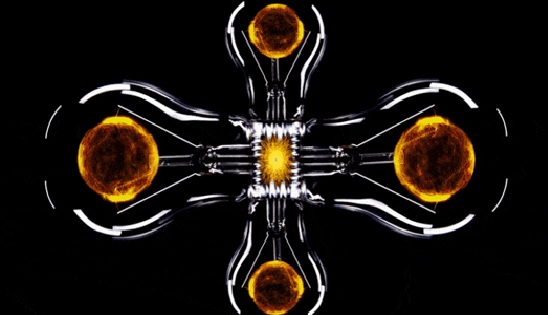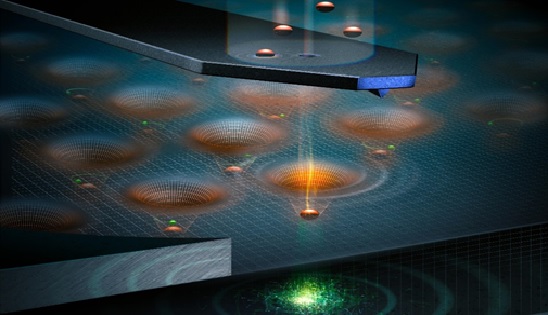Secure Quantum Internet
Quantum communication systems, which are often networked in a way similar to the internet, are more secure than regular networks because of the way they transfer data. They rely on the quantum properties of photons, rather than computer code. The impregnable photons are much more secure than computer code, which can easily be manipulated or exploited to find vulnerabilities.[1]

Figure 1. the Secure Quantum Internet
Figure 1 shows The quantum internet is a network that will let quantum devices exchange some information within an environment that harnesses the weird laws of quantum mechanics. In theory, this would lend the quantum internet unprecedented capabilities that are impossible to carry out with today's web applications.[2]
Connecting 50 to 100 people – and scaling up
The quantum communication network was essentially a mini-internet network. It split the photons from a single laser and enabled up to 100 people to communicate at the same time – though efficiency can be improved further.
This is such an important development because quantum internet connections could allow for networking that – on the face of it – is impervious to hacking, preventing many of the issues that blight current internet users.
Quantum internet connections should, in theory, offer unprecedented security and privacy. The photon that is used to communicate between different nodes on a network in theory cannot be intercepted and decoded easily without the correct information and encryption keys. However, that always relies on people keeping information safe.[1]
Quantum Communications
One of the most exciting avenues that researchers, armed with qubits, are exploring, is communications security. Quantum security leads us to the concept of quantum cryptography which uses physics to develop a cryptosystem completely secure against being compromised without knowledge of the sender or the receiver of the messages.
Essentially, quantum cryptography is based on the usage of individual particles/waves of light (photon) and their intrinsic quantum properties to develop an unbreakable cryptosystem (because it is impossible to measure the quantum state of any system without disturbing that system.) Quantum cryptography uses photons to transmit a key. Once the key is transmitted, coding and encoding using the normal secret-key method can take place.[3]
Secure quantum communications network
But networks that involve trusted nodes are only partly quantum. Quantum physics plays a part only in how the nodes create the encryption key; the subsequent encryption and transmission of information is entirely classical. A true quantum network would be able to harness entanglement and teleportation to transmit quantum information over long distances, without the need for vulnerable trusted nodes.
One of the main motivations for building such networks is to enable quantum computers to talk to each other, both between countries and across a single room. The number of qubits that can be packed into any one computing system may be limited, so networking the systems together could help physicists to scale them up. “At this point, it’s fair to say that probably you’ll be able to build a quantum computer with maybe a couple of hundred qubits,” says Mikhail Lukin, a physicist at Harvard University in Cambridge, Massachusetts.[4]
References:
- https://cybernews.com/security/quantum-internet-and-the-future-of-cybersecurity/
- https://www.zdnet.com/article/what-is-the-quantum-internet-everything-you-need-to-know-about-the-weird-future-of-quantum-networks/
- https://www.bbvaopenmind.com/en/technology/digital-world/quantum-internet-explained/
- https://www.nature.com/articles/d41586-018-01835-3
Cite this article:
Thanusri swetha J (2021), Secure Quantum Internet, AnaTechMaz, pp.19















